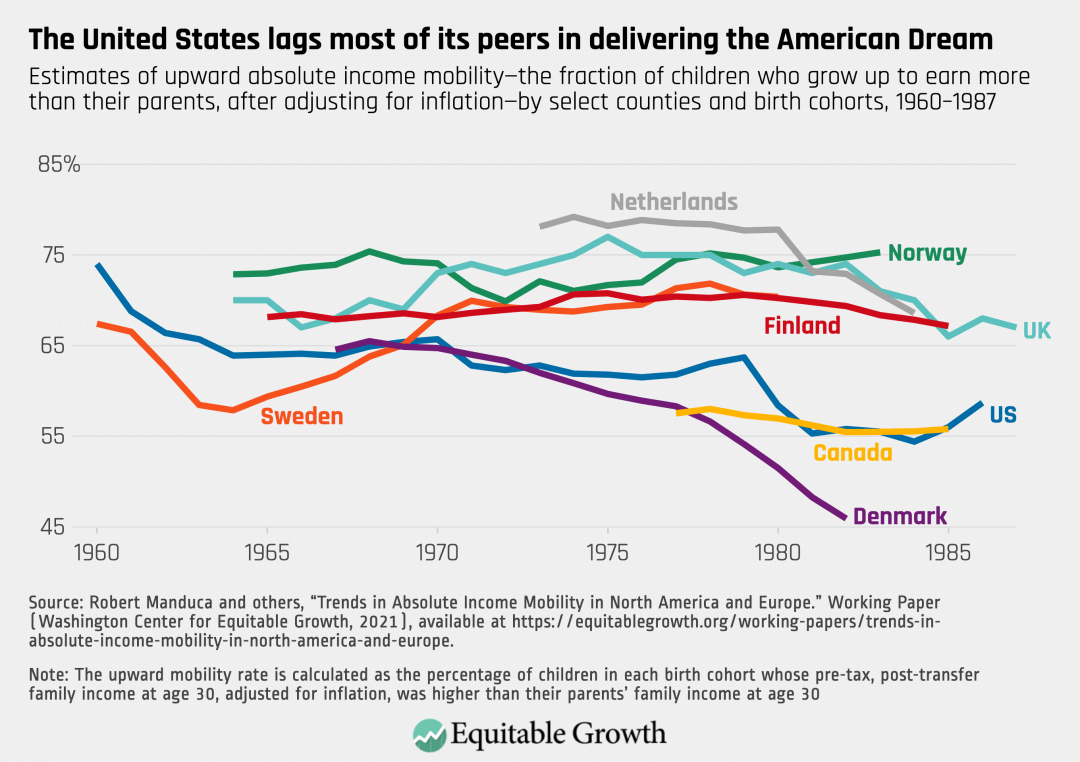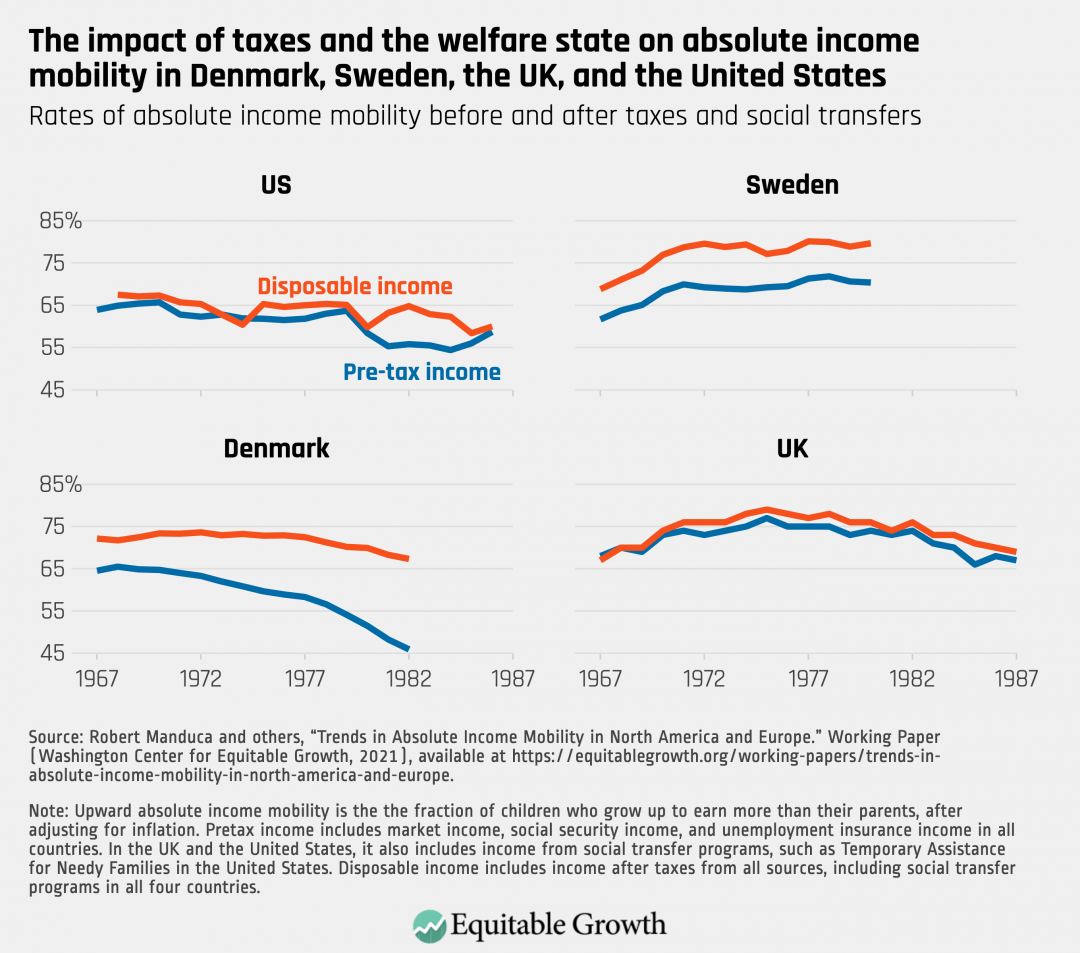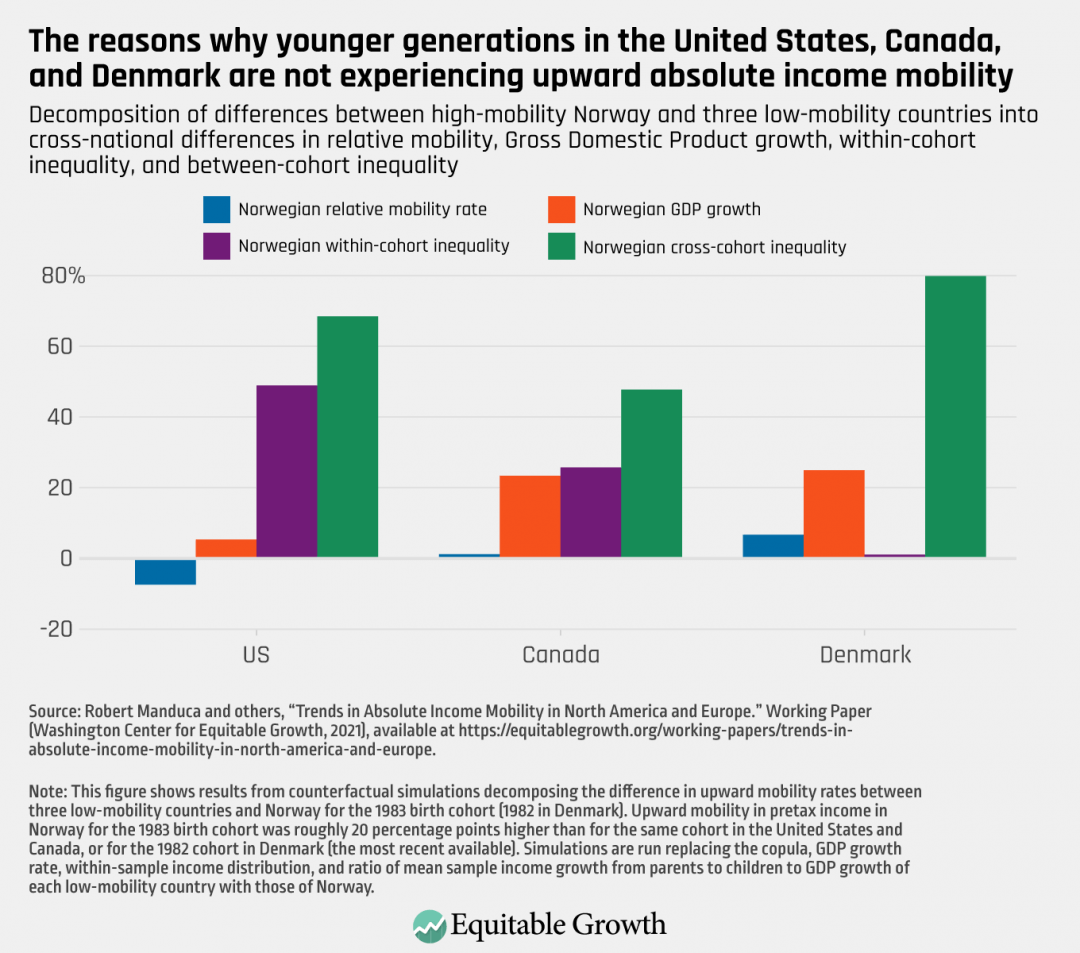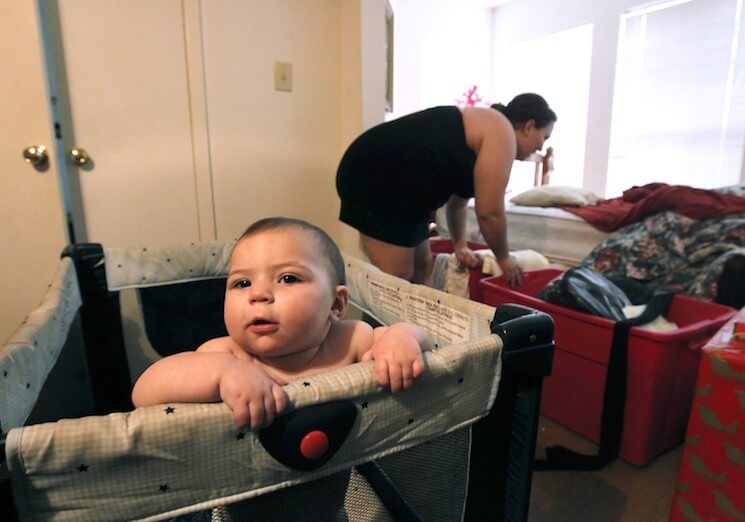The American Dream is less of a reality today in the United States, compared to other peer nations

The hope that children will grow up to have higher standards of living than their parents is widespread around the world. In the United States, this concept is considered by many to be a core component of the American Dream—the idea of a “better life for your children” is a major part of what has drawn immigrants to this country for generations.
Recent research, however, shows that in the United States, the rate of upward absolute income mobility—the fraction of children who grow up to earn more than their parents, after adjusting for inflation—declined substantially over the past 50 years. More than 90 percent of U.S. children born in 1940 had higher real incomes at age 30 than their parents did, but only about 50 percent of children born in 1980 can say the same. This raises the question: Was this decline part of a global trend, or is the United States alone in its low rates of upward mobility?
In short, does the American Dream live on, but in other countries?
There are reasons to expect this may be the case. Many features of the U.S. economic system are unusual among high-income countries. Levels of economic inequality—a key driver of declining absolute mobility in the United States—are higher in the United States than in virtually any other country of its income level.
Contrary to the self-conception that the United States is the “land of opportunity,” relative social mobility—the likelihood of a child born to low-income parents climbing to the top of the income distribution as an adult—is low in the United States, compared to many European countries. The United States also has a distinctive welfare state, with less social insurance and lower labor union penetration than most other high-income countries. Instead, the United States relies on consumer credit for many expenses that other countries cover through social insurance programs.
In our new working paper, I and my 13 co-authors (listed in the tagline at the end of this column) compare rates of absolute income mobility in the United States to seven other high-income countries in North America and Europe: Canada, Denmark, Finland, the Netherlands, Norway, Sweden, and the United Kingdom. As Figure 1 shows, the variation in upward mobility rates among these countries is striking. (See Figure 1.)
Figure 1

Figure 1 shows that more than 75 percent of Norwegian children in recent birth cohorts grew up to earn more than their parents, compared to around 55 percent of children in the United States and Canada. Children born in the 1970s in the Netherlands had even higher rates of upward mobility—almost 80 percent—before seeing a sharp decline for cohorts who turned 30 after the global financial crisis of 2008. Between 65 percent and 75 percent of children in Finland, Sweden, and the United Kingdom experienced upward mobility in absolute terms.
Among the European countries in our sample, only Denmark has seen upward mobility rates lower than the United States and Canada, following a steep decline after the global financial crisis, which hit Denmark especially hard. But the Danish welfare state had the effect of blunting the impact of the crisis. The country’s pretax upward mobility for the 1982 cohort was just 46 percent, yet upward mobility after taxes and social transfers was 67 percent, as shown in Figure 2.
Figure 2

In contrast, upward mobility in post-tax disposable income for the 1982 cohort in the United States was just 7 percentage points higher than in pretax income, and the gap has narrowed further for more recent cohorts. The Danish exposure to macroeconomic headwinds was buffered by its tax system and welfare state, in line with its longstanding policy of “flexicurity” in its labor market, which combines relatively low barriers to hiring and firing with substantial social insurance protections.
What explains the variation in upward absolute mobility rates across countries? There are at least three main possibilities. It could be that the level of absolute mobility is shaped by the level of relative mobility—the likelihood that a child born to parents who are poorer than their peers might grow up to be rich relative to her own cohort. Alternately, it could be that faster economic growth is the main driver of upward mobility in absolute terms. Finally, higher rates of absolute mobility might result from lower levels of inequality, which means that a given amount of economic growth translates into higher living standards for more people.
To determine the importance of each of these possible contributors, we conducted a simulation exercise comparing the three lowest-mobility countries—Canada, Denmark (in pretax income only), and the United States—with Norway, which had the highest rates of upward mobility among the most recent cohorts. (See Figure 3.)
Figure 3

Interestingly, we find that the amount of relative income mobility has little impact on rates of absolute mobility. Compared to children in the United States, children in Norway are about 25 percent more likely to occupy a substantially higher or lower rung of the income distribution than their parents. But because relative mobility is zero sum—for every child who moves up in income rank, some other children move down—its impact on mobility in dollar terms is minimal.
Both economic growth and economic inequality shape absolute mobility. As Figure 3 shows, slower economic growth accounts for around 25 percent of the difference in mobility with Norway for Canada and Denmark. Both of these countries saw slower Gross Domestic Product growth than Norway did during the period between 1983 and 2013, in part due to greater exposure to the global financial crisis. The United States, in contrast, saw overall growth rates similar to those of Norway, so economic growth alone cannot account for the mobility difference.
We distinguish between two types of economic inequality in our analysis. First is within-cohort inequality: among 30-year-olds, how evenly are earnings spread? As Figure 2 shows, this is a major driver of the lower mobility rates for the United States: The richest 30-year-olds take a larger share of the cohort’s total income in the United States than in Norway. If inequality among 30-year-olds were as low in the United States as in Norway, about 50 percent of the mobility gap between the countries would be closed. In Canada, within-cohort inequality accounts for about 25 percent of the gap, while in Denmark, it hardly contributes at all.
The second type of inequality we examine is cross-cohort inequality. This measures the extent to which incomes for 30-year-olds as a whole kept up with GDP during our sample period. In all three low-mobility countries, cross-cohort inequality is by far the largest driver of low mobility rates. Incomes for young adults in these countries, as a whole, are not keeping up with economic growth. Incomes for our sample of U.S. 30-year-olds born in 1983 grew only 71 percent as quickly as GDP did over the 30 years to 2013. In Norway, incomes for 30-year-olds grew 95 percent as fast as GDP.
Cross-cohort inequality accounts for the bulk of the difference between each of the three low-mobility countries and Norway—and the same is true if we compare to Finland and Sweden instead. The primary reason that upward mobility rates have fallen in the United States, Canada, and Denmark, but stayed high in much of Scandinavia, is that incomes for young adults in the low-mobility countries have not kept up with overall economic growth.
In the United States, recent scholarship and policy debates highlight how millennials (those born between 1981 and 1996) are not seeing the same early economic gains that previous generations enjoyed. Many factors contribute to this generational difference, but shifts in the U.S. labor market that advantage employers at the expense of workers are a fundamental cause. Young adults are doubly affected by this: They are less likely to be employers themselves, and they don’t have the protections of seniority that some older workers have achieved.
The goal of a better life for one’s children is aspired to around the world. As our working paper demonstrates, maintaining high rates of upward absolute income mobility is not a given and requires economic institutions capable of both generating economic growth and translating that growth into higher living standards for society as a whole. As U.S. policymakers ponder how to restructure our institutions to make the American Dream a reality once more, they can take inspiration from the countries around the world where mass upward mobility is still a reality.
—Robert Manduca is an assistant professor of sociology at the University of Michigan. He is a co-author of the Equitable Growth working paper “Trends in Absolute Income Mobility in North America and Europe,” along with: Maximilian Hell, Department of Sociology, Stanford University; Adrian Adermon, Institute for Evaluation of Labor Market and Education Policy, Uppsala, Sweden; Jo Blanden, Department of Economics, University of Surrey; Espen Bratberg, Department of Economics, University of Bergen; Anne C. Gielen, Erasmus School of Economics, Rotterdam, the Netherlands; Hans van Kippersluis, Erasmus School of Economics, Rotterdam, the Netherlands; Keun Bok Lee, California Center for Population Research, University of California, Los Angeles; Stephen Machin, Department of Economics, London School of Economics; Martin D. Munk, Department of Educational Sociology, Danish School of Education, Aarhus University; Martin Nybom, Institute for Evaluation of Labor Market and Education Policy, Uppsala, Sweden; Yuri Ostrovsky, Statistics Canada; Sumaiya Rahman, Frontier Economics; and Outi Sirniö, Department of Sociology, University of Turku.






